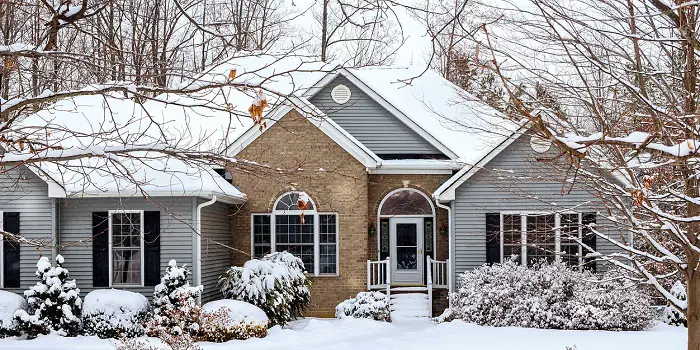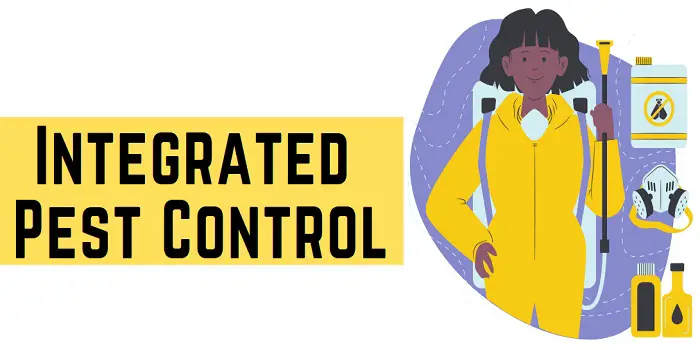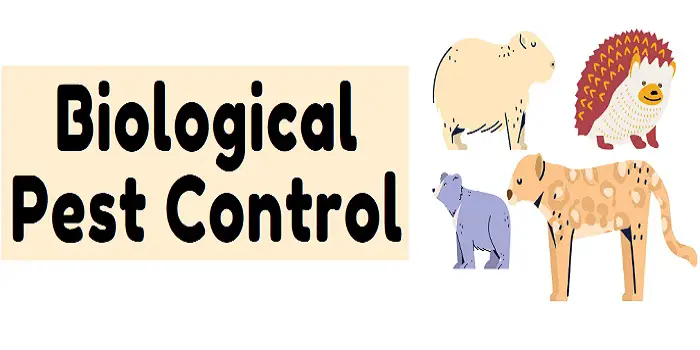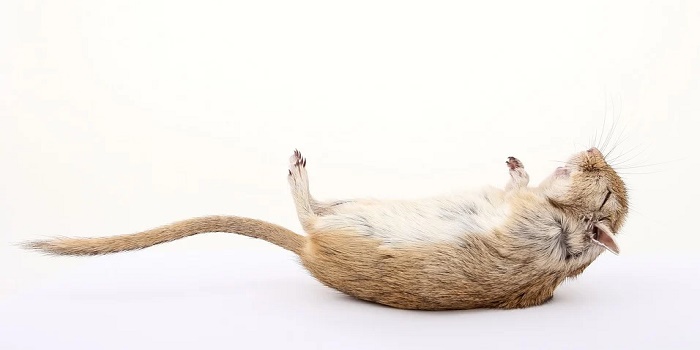
Mulch is a vital part of your garden.
It helps the soil retain moisture and reduces erosion of the soil from the wind and rain.
Mulch also takes up space that otherwise might be occupied by weeds.
And when mulch decays, it provides valuable nutrients that help your plants grow.
But one misconception about mulch is that it attracts pests to your garden.
While mulch does provide cover for certain bugs to protect themselves, such as termites, it does not per se attract them to your garden.
It does provide moisture that helps bugs survive, and too much mulch may provide protection for many bugs.
The good news is that there are certain natural materials such as wood that can repel bugs and keep them away from your garden.
If you want to reduce the chances of the mulch alone being the home to many different bugs, only apply a thin layer of two to three inches.
This will be enough to protect the soil and keep any infestation of bugs to a minimum.
What follows are the most common types of mulch available that can resist insects…
Types of Mulch to Keep Bugs Away
Although there are different types of mulch, they can be broken down into two categories, organic and inorganic.
Organic mulch, as the name implies, comes from natural sources such as bark, grass, leaves, shells of nuts, and straw.
While inorganic mulch comes from products such as plastic, rubber, or other inert materials that do no harm to the soil and provide much-needed protection.
Organic Mulches
As to which type of mulch is better at repelling unwanted bugs, organic mulch has components that improve the overall health of the soil.
This means that the mulch will improve the composition of the soil which boosts the production of the good bacteria, fungi, and bugs that are helpful to your garden.
Keep in mind that there are insects that consume the bugs set on destroying your plants.
It is true that some organic mulches may attract unwanted bugs, such as earwigs, for example.
You can mix the mulch with organic insecticides to protect the plants while destroying such pests.
Some of the better types of organic mulch include the following.
a) Cedar & Cypress
One of the best natural repellents, cedar, and cypress, contain elements that repel unwanted pests, most notably the bugs that otherwise feast on your plants.
You can find cedar chips easily, and they are most effective at repelling the following bugs.
- Ants
- Carpet Beetles
- Cockroaches
- Moths
- Termites & More
In addition, they also last longer compared to most natural mulches.
This means that they will be protecting your garden for a long time.
It also helps that they provide valuable nutrients to the soil as the cedar and cypress decay.
Because the cedar will slowly lose its color over time, you can tell when a new batch is needed.
b) Straw
Straw, along with cocoa bean shells, is excellent for reducing the presence of unwanted insects in your garden.
The dreaded cucumber beetle does not like straw, especially when choosing a location to lay its eggs.
Placing straw in your garden for mulching purposes and around your garden forms a protective barrier from bugs like the cucumber beetles.
Plus, straw also protects against unwanted fungi and plant rot which can affect healthy plants.
Cocoa bean shells are an interesting inclusion because the odor of the chocolate repels specific bugs such as termites and slugs.
However, if you have dogs, then you should not use the shells as chocolate is poison to them.
Plus, you may find your young children eating the cocoa bean shells as well which is not a good thing.
c) Melaleuca mulch
This type of mulch is made from the melaleuca tree, which is a native Australian tree.
Melaleuca mulch is known to turn off termites and other insects when used properly in the soil.
It’s also a great option for your landscape because it maintains the moisture in the soil very well and lasts for a long.
Inorganic Mulches
Inorganic mulches also serve their purpose, providing shelter and cover for the soil to prevent erosion.
a) Plastic
Most of this type of mulch consists of polyethylene which you often see as clear, black, or aluminum-coated sheets.
The most desired are the aluminum and clear type as they reflect the heat and help trap the moisture in the ground.
The reflective quality keeps the unwanted bugs away as the light coming from underneath confuses most bugs.
The downside to using plastic is that it only really works when the leaves from the garden plants fail to shade most of the soil.
If more than 60% of the soil is shaded, then the plastic mulch does not work.
Plus, if it does trap heat, such as the black mulch products, then it may burn the plants it is trying to protect.
b) Rubber & Stone
These inorganic mulch products are quite good at protecting the soil.
Their main benefit is that they are not consumable, so the bugs will not try to eat the mulch.
This means that they do not attract as many bugs compared to organic mulch.
And rubber and stone mulch will last for a very long time as they are resilient to erosive forces.
If you want to buy them online, you can find them in the form of bagged mulch from various brands at stores like Lowes, Home Depot, or Amazon.
Just take a look at the reviews and buy one that suits you best.
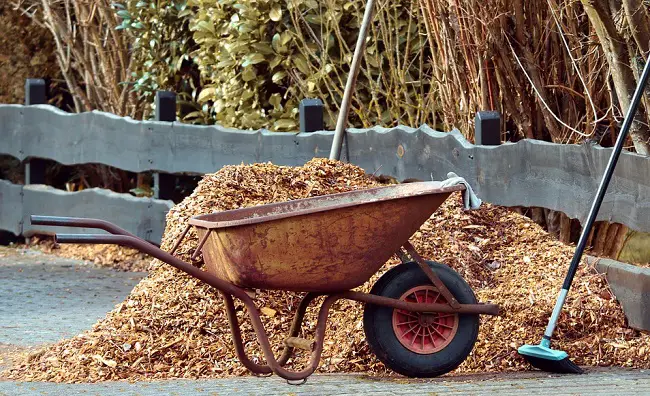
When and How Often Should You Mulch Garden?
In general, the best mulching season is supposed to be between mid-to-late spring.
It’s the time of the year when soil is warming up and losing its numbness due to freezing temperatures in winter.
Mulching your garden soil too early will not be much effective as the process will slow down due to a slower warming process.
Also, remember that you should mulch at least twice a year to achieve the best results with the right amount that can help fend off weeds and insects.
Avoid using too little or too much mulch. If you use less, it will not conserve moisture well.
And if you use more, you may need to irrigate the soil often and attract more pests.
How to Employ Mulch in Your Garden – for Keeping Insects Out
Now that you know the different types of mulch, here are a few tips on how to use it to keep unwanted insects out of your garden.
1- Buy What You Need:
You can calculate how much mulch is needed for your garden by doing a few calculations.
First, measure how many square feet your garden is by multiplying the width by the length.
If your garden is not rectangular or square such as an oval, then calculate it as if it were rectangular and reduce the total by a small amount.
2- Apply Thin Layers:
Once you get past two to three inches, adding more mulch will not only be less effective, you may be creating a home for certain unwanted pests such as termites.
Keep the layers to two to three inches when adding mulch.
This applies to both organic and inorganic mulch.
Be sure to remove the old layer of mulch first before applying a new layer.
Spread the mulch evenly and try to avoid any pockets of buildup that might provide the bugs home.
3- Water Carefully:
Remember that the water you add to your garden, which seeps under the mulch, will not evaporate like on open ground.
Because the mulch traps the moisture, you will not need to water your garden as much.
An exception is if you use inorganic mulch such as plastic, stone, or rubber.
These inorganic elements will not retain as much water compared to organic ones.
Overwatering can cause far more issues, such as making a home for bugs and killing your plants, so reduce the watering appropriately to help nourish your plants without adding too much.
You will need to water a little more when using inorganic materials for your mulch.
You may want to experiment at first to see how much water is needed.
4- Keep Away from Trees:
Mulch and trees generally do not get along.
While covering the soil does keep the grass down, it may also provide a home to termites that will feast on the wood.
5- Keep Away from Your Home:
You’ll want to keep the mulch away from your home, at least six inches if possible, but a foot or more if you can.
This is because even a thin layer of mulch may be enough for some bugs to find a home.
This is particularly true of termites that might find their way into your home.
Keeping the mulch some distance away creates a safe zone that is difficult for the pests to cross.
Warning:
Be sure when you pick and apply the ground cover, do it correctly.
Some types can be flammable and can ignite to cause fire hazards – if they become too dry.
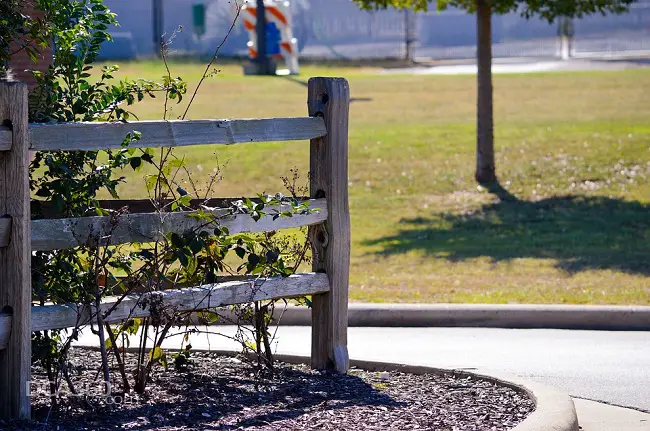
Other Related Questions:
What type of bugs lives in mulch?
Mulch that we use in garden soil naturally provides the warm, welcoming conditions many insects seek.
That’s the reason you may see red, black, and white color bugs like ants, spiders, slugs, sowbugs, earwigs, springtails, millipedes, centipedes, and even roaches crawling through the mulch beds.
Worry not, as not all of them are harmful.
Some can be beneficial, as they tend to feed on various small garden insects.
Plus, some of them can also help in breaking down organic mulch.
Can there be other animals besides insects?
Many times, you can sense some other animals (and not insects) digging through your mulch every night.
They may be raccoons, skunks, mice, or even armadillos smelling hard through their nose in the mulch.
They are usually in search of their dinner late at night and come to your mulch to find some spiders, grubs, and other insects.
Most likely, you can identify and confirm the raccoons, skunks, and armadillos with the indentations and handprints that are left behind in the soil.
Mice will be after the planted flower bulbs and seeds, so if you find bits of chewed bulb tissues on the surface, you can suspect them to be mice and can follow the specific treatment methods.
Rarely can they be pets like cats or your neighbor’s dog that can be scratching mulched garden beds?
What to do if existing bagged mulch has bugs?
Store-bought mulch that comes in bags may sometimes have pests inside.
Especially black color mulch tends to attract the insects most.
If you happen to find them, consider putting the bag in the sun for a couple of hours before using it in your garden.
Also, you can apply some chocolate scent (in the form of a cocoa bean shell) to treat the mulch for insects, as most bugs do not find this scent pleasing.
What is the best mulch for gardens, and which one to avoid?
Hardwood bark mulch decomposes into a rich, sweet-smelling black dirt that mixes well into the soil.
It’s one of the best mulches you can consider for your garden.
The one you should avoid is large, bark-type mulch or the one that is made up of bigger wood chips.
Larger pieces will take a long time to get decompose and will slow down the overall process of providing the essential nutrients to soil and plants.
The Conclusion
Choosing the right mulch in your garden will help repel unwanted bugs and protect your plants simultaneously.
Just remember that there are different types of mulch that each have a different effect on your garden.
You will need to become familiar with the different types of mulch available.
Plus, following the above tips will help you place and retain the proper type and amount of mulch for your garden.
Share the post "What Kind of Mulch is Best to Deter Bugs and Weeds?"

Welcome to ProShieldPest.com. I am Tina Jones. I have been working as a pest removal professional in Winslow, Arizona lately. At present, I love to spend my time with my family as a retiree.
Here I share all my knowledge and experiences to help people understand better how they can stop pests at their homes without actually killing them. Hopefully, the information you will find here will help in safeguarding your home! You can check more about me here.

